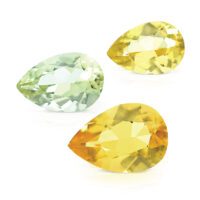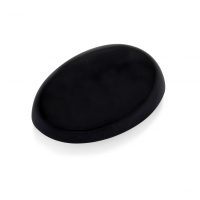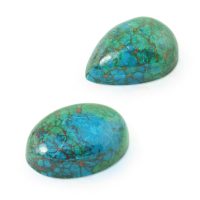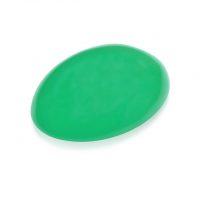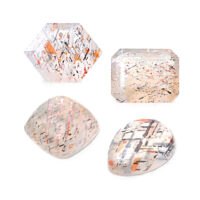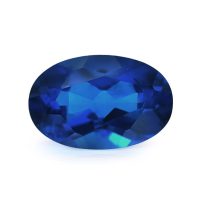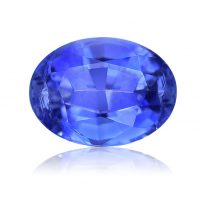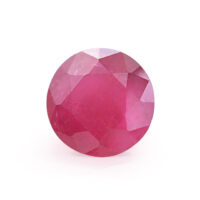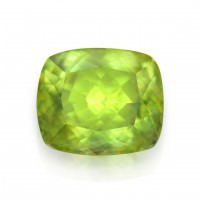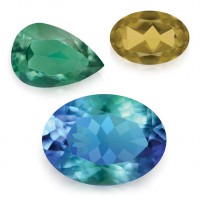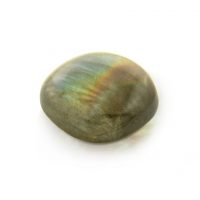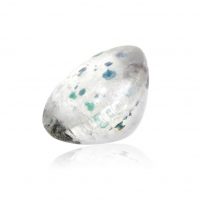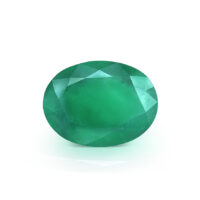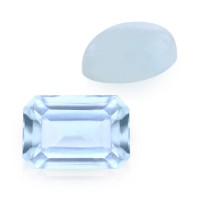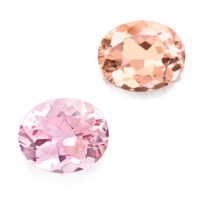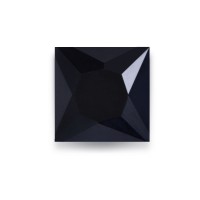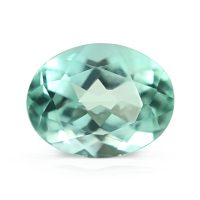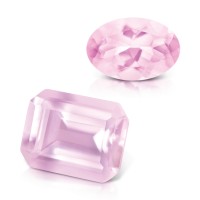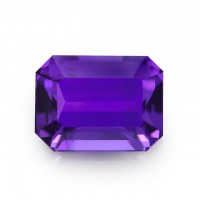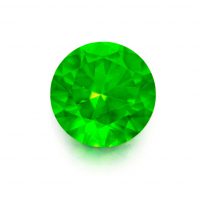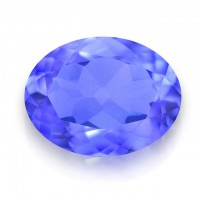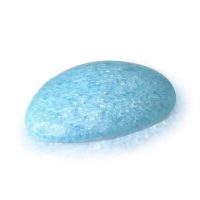

Undeniably beautiful, increasingly scarce, and highly coveted, Californian Tourmaline was discovered in San Diego County in 1892. Once a quintessentially American gemstone, today its renowned mines are virtually depleted. Californian Tourmaline was mined over 15 years ago at the world-famous Himalaya Mine by Richard and Helen Shull of the aptly named, Out of Our Mines Lapidary & Beadworks. Ours display brilliant verdant and roses, excellent clarity for the locale, with optimal lapidary affording an exceptionally colorful brilliance.
Hardness 7 – 7.5
Refractive Index 1.624 – 1.644
Relative Density 2.82 – 3.32
Enhancement None
Beauty
Californian Tourmalines feature a beautiful range of golden yellow greens, yellowish-greens, and silvery greens, as well as pinks, in a variety of light, medium, and dark saturations (strength of a color) and tones (lightness or darkness of a color).
While Californian Tourmalines’ characteristic inclusions can create a beautiful look, ours display exceptional clarity, ranging from visibly included to eye-clean, the highest quality clarity grade for colored gemstones as determined by the world’s leading gemological laboratories. Pink Tourmalines with little to no inclusions are globally scarce, but even more so from the heavily worked Himalaya Mine.
Periodically cut in small batches by a Ceylonese family close to the miners for well over two decades, Californian Tourmaline is expertly faceted in the legendary gem country of Sri Lanka (Ceylon), home to some of the world’s best lapidaries. Every gem has been optimally faceted by experienced cutters who carefully orientate each crystal to maximize colorful brilliance, maintaining a high-polish/luster, as well as a good shape and overall appearance (outline, profile and proportions).
While some gemstones look better in natural daylight and others in artificial (incandescent) light, a gemstone’s colors should ideally remain beautiful in any light source. Despite this, all Tourmalines are ‘day gems’, meaning they typically look their very best in natural light.
One of October’s birthstones, Tourmaline frequently garners the nickname, ‘the chameleon gem’, not only because of its multitude of colors, but also because of its historic propensity to be confused with other gemstones. Tourmaline is derived from the Sinhalese ‘turmali’, which means ‘mixed parcel’ or ‘stone with mixed colors’ and are a group of related minerals whose differences in composition result in a huge variety of colors. While there are 13 mineralogical varieties of Tourmaline, the main variety is Elbaite. Named after the island of its discovery (Elba) in Tuscany, Italy, Elbaite is the backbone of Tourmaline gemstones. A source of minerals during antiquity, Elba is best known as the island of Napoleon’s exile in 1814. Name a color and in all likelihood, you’ll find it in Tourmaline. Even pure ‘amethyst’ purples have appeared since the discovery of the Mozambique Paraíba deposit in the Mavuco area. Tourmaline’s different colors are either identified by a color prefix, such as blue-green, green and pink, or a variety name or prefix. These include Bicolor Tourmaline (two or more colors), Canary Tourmaline (intense yellow from the African nations of Malawi and Zambia), Cat’s Eye Tourmaline (chatoyant Tourmaline), Color Change Tourmaline (green to red), Cuprian Tourmaline (non-Paraíba hues, but still colored by copper and manganese), Indicolite (blue), Paraíba Tourmaline (blue to green, colored by copper and manganese), Rubellite (purplish-red), and Watermelon Tourmaline (pink interior, green exterior, just like the fruit). Another prized, but exceedingly rare variety is Chrome Tourmaline, a vivid pure green East African Dravite colored by chromium and vanadium, the same elements that make Emerald and Tsavorite. Last is Schorl (Black Tourmaline), a variety that is naturally abundant and once popular in mourning jewelry, yet now commercially scarce because it’s rarely faceted. Nevertheless, interest in both Black Tourmaline and Black Spinel has increased due to the popularity of Black Diamonds.
Rarity
Major Tourmaline sources include, Afghanistan (Kunar Valley), Brazil, Democratic Republic of the Congo, Madagascar, Mozambique, Namibia, Nigeria, Pakistan, Tanzania, and largely historically, the USA (California & Maine).
First unearthed in San Diego County’s Mesa Grande district, Californian Tourmaline by the turn of the 20th century had become a gemstone synonymous with America. However, years before this discovery, Native Americans valued these colorful and ostensibly, mysterious crystals. Fossicking Tourmalines in eroded cavities on high mountain slopes, they were prized amulets. San Diego County’s most famed Tourmaline excavations include, the Tourmaline Queen, Tourmaline King, Stewart, Pala Chief, and Himalaya mines. Californian Tourmalines’ rapid increase in awareness and popularly was largely through the efforts of gemologist, George Frederick Kunz. He wrote extensively about California’s Tourmaline deposits, praising the gemstones unearthed. When Pink Spodumene was discovered in California around 1902, Kunz was the gemologist credited with its identification, and it was named ‘Kunzite’ in his honor. Self-taught from books and practical research, Kunz collected 4,000 mineral specimens while still in his teens. Ultimately, his knowledge saw him employed as the resident gem expert at that iconic jeweler, Tiffany & Co., becoming their vice president by the age of 23.
One of the world’s oldest Tourmaline mines, the Himalaya Mine opened in 1898, stopping major production around 1912. The mine is an approximately 8-kilometer underground labyrinth of precipitous tunnelways dug, drilled, and blasted over 120 years. For 15 years, the Himalaya Mine produced more Tourmaline than any mine in the world, yielding Bicolor, Pink, Green, Tricolor, and Watermelon Tourmalines. Californian Tourmaline is found in pegmatites (a coarsely crystalline igneous rock) running 45-degrees into the earth. While several pegmatites on Mesa Grande contain Tourmaline, the Himalaya Mine is located on the largest. Today, it still occasionally yields sporadic amounts of Tourmaline, but this gem is impossibly rare and extremely challenging to obtain. Aside from its coveted gemstones, Tourmaline mineral specimens have also been unearthed from the Himalaya Mine, with some on display at the Smithsonian Museum of Natural History.
The exact reason why the mine was named ‘Himalaya’ is unknown. Potentially coined for its size, it’s rumored the mine owners (or perhaps even Tiffany & Co.) wanted the gem to sound exotic in New York, marketing it as ‘Himalayan’. The mine was formally named by Julius Lippman Tannenbaum, a New York jeweler, who in 1901 claimed the mine and formed the Himalaya Mining Company. The Himalaya Mining Company not only mined Tourmaline in San Diego, but also Turquoise in California and Nevada.
Despite its American roots, Tourmaline’s biggest market in the late 19th century was China. Their artisans carved Tourmaline into prized snuff bottles, also faceting pieces to be set in jewelry. In 1901, the Dowager Empress ordered a large amount of Tourmaline from Tiffany & Co., with Tannenbaum (Himalaya Mining Company) supplying the majority they sold to China (1901 – 1911).
Ethical, environmental and socially responsible, chain of custody and mine level value is the heart and soul of the Shull’s genuine mine-to-market approach. The Shull’s history with the Himalaya Mine starts in 1998, the year of its 100th anniversary! Working the Himalaya Mine for nine years (1998 – 2007), all mining was done by hand, 15 – 120 meters underground. Hand-mining Californian Tourmaline directly from its host pegmatite is laborious and the yields’ low, only approximately 5 percent are gem-grade. Looking back, Helen commented, “It was an amazing experience to be able to work in that wild underground world for several years!” Since 2009 they have been based at the famous Dyer Blue Turquoise Mine, located near the town of Dyer in Esmeralda County, Nevada. Interestingly, the early histories of mining Tourmaline in southern California, and Nevada’s Turquoise mining, are connected. Similar to Richard and Helen Shull, the same people who worked the Himalaya Mine in the early 1900s, also came to mine Turquoise in the same region of Nevada.
With over 90 percent of gemstones enhanced, Tourmaline is sometimes heated and/or irradiated to improve their color. Californian Tourmaline are all natural and unenhanced, accentuating both their rarity and desirability.
Durability & Care
Californian Tourmaline is a durable gemstone (Mohs’ Hardness: 7 – 7.5) well-suited to everyday jewelry. Always store Californian Tourmaline carefully to avoid scuffs and scratches. Clean with gentle soap and lukewarm water, scrubbing behind the gem with a very soft toothbrush as necessary. After cleaning, pat dry with a soft towel or chamois cloth.
Map Location

Click map to enlarge



















